- Why Us?
- Features
White Label
For SaaS Platforms & Agencies
Provide our complete analytics suite to your clients, directly within your own interface and with your/their own branding. Discover Analytics-as-a-Service and White Label Analytics. Great benefit, minimal effort.
- Pricing
- White Label
- Success Stories
- ResourcesGetting Started
CONTENTS
- What is Net Promoter Score (NPS)?
- Why is NPS important?
- How to Calculate NPS
- How to Interpret Net Promoter Score
- What is a Good NPS score?
- What is a Bad NPS Score?
- Is Net Promoter Score a 'Vanity Metric'?
- How Often Should I Survey the Net Promoter Score (NPS)?
- Is There a Better Customer Satisfaction Metric than Net Promoter Score?
- Customer Effort Score - or CES
- Customer Satisfaction Survey - or CSAT
- What Are the Best Online Tools for Measuring Net Promoter Score and Why?
- Is the Net Promoter Score as Valid Today as When it Was Introduced?
- Sprinkle Some Survey Magic Into Your Marketing!
Maximizing Value from Net Promoter Score (NPS) Online

How many times have you heard people talking about Net Promoter Score (NPS) and wondered what on earth this thing is and what it’s for? Wonder no longer, as this article will go through all you need to know and more.
As you may already know, there are a number of customer satisfaction metrics out there. These are widely used across numerous business sectors and are the bridge upon which companies can move from bad, to good, to great - if used wisely.
Today, we will be focusing on the world of Net Promoter Score (NPS), exploring how it can help your business. And it can help your business - a lot!
This is a great addition to surveys that are all too easy to create now thanks to the survey feature in our website analytics platform.
Net Promoter Score (NPS) is a very valuable and important metric that warrants going through in some detail, so please read on for your comprehensive guide to NPS.
You can scroll through the article, or click on a question below to jump to the answer you’re looking for:
What is Net Promoter Score (NPS)?
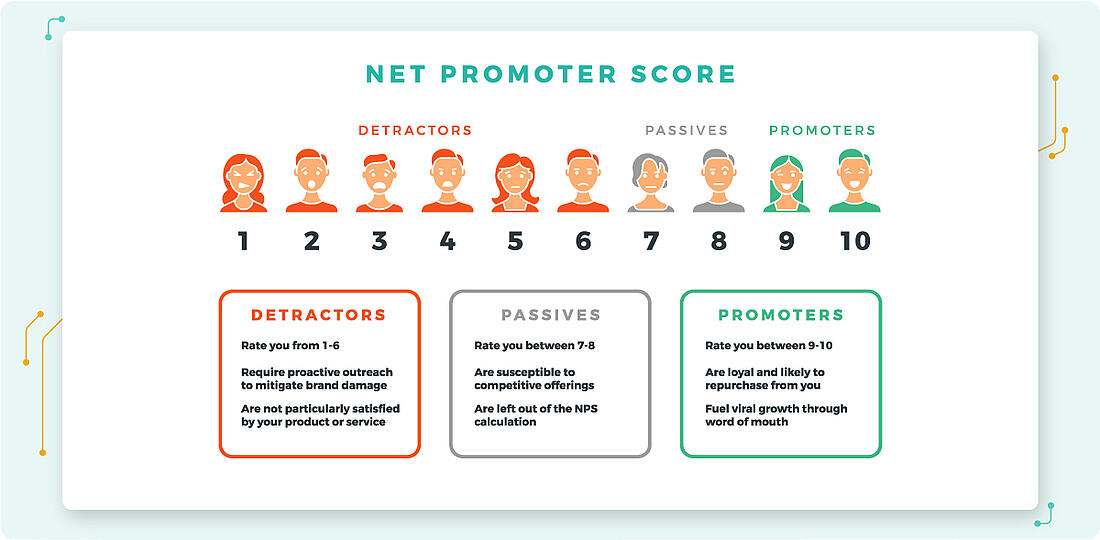
Net Promoter Score®, or NPS®, is an effective way to gauge how your customers feel about your business. Using this simple metric can help you to predict your business growth and guide you towards a better understanding of any gaps in your customer service offering.
Some businesses may prefer to use a more general, traditional feedback survey to gain a more specific understanding of customer experience; these tend to have more questions, however, and are more likely to put customers off. After all, we are all such busy bees these days.
Net Promoter Score (NPS) measures satisfaction and loyalty by asking customers how likely they are to recommend your product or service to others on a sale of 0-10 in a quick and easy survey.
A common NPS question would be along the lines of
“On a scale of 0-10, how likely are you to recommend our (business/product/service etc.) to a friend or colleague?”.
This is often followed with an open-ended question asking the reason for the customer’s score - for further information on open-ended questions, see our brilliant article here, which tells you everything you need to know.
The responses to these questions are then split into three categories.
- Detractors: Anyone who selects numbers 0-6 is a detractor
- Passives: The people who select either 7 or 8. They may think they are giving a generous score, but ultimately they are fence-sitters
- Promoters: These are your golden devotees - they select 9 or 10 and think you are wonderful!
The added bonus of NPS is that it is a globally recognized metric, with a wide range of industries making use of it. This enables you to easily discover how your business compares to its competitors and develop an understanding of what benchmarks you should set.
Why is NPS important?
Ultimately, your Net Promoter Score is a litmus test for your marketing success.
You can use it to easily assess the quality of your customer support, as well as the wider customer experience next to the performance of competitors in your industry.
If you would like to know more about how you can analyze your competitors, check out our handy industry comparison tool.
A high NPS score can mean that everything is wonderful - and you just need to keep up the good work and stay ahead of the game. A low score means you have some serious work to do and should take drastic steps to improve it!
NPS is a system which is easy to understand and implement - making it a simple, yet very effective way to understand how your customers feel about you and your brand - and how loyal they are to you.
How to Calculate NPS
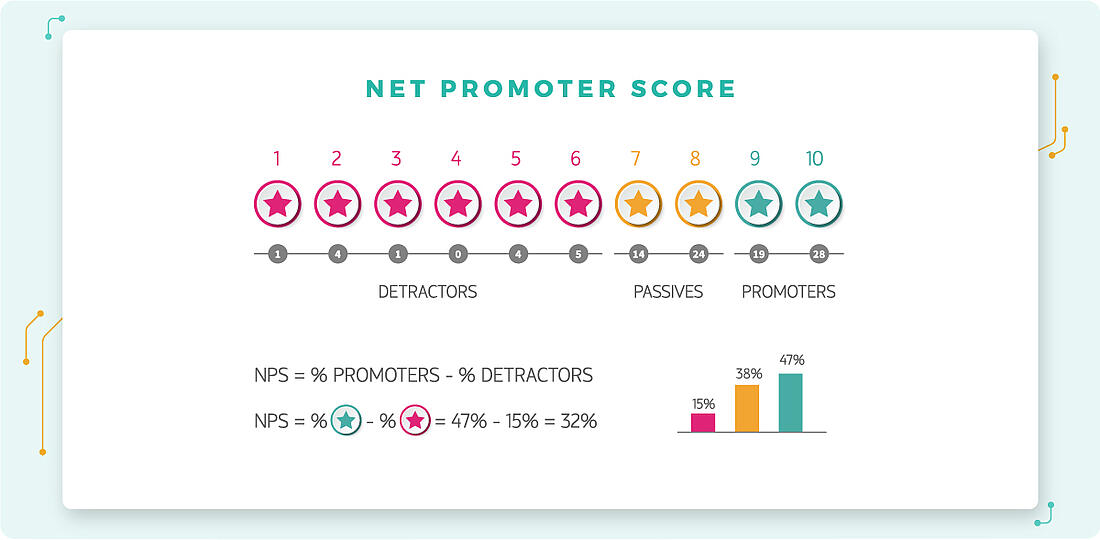
If you are wondering how to read your Net Promoter Score (NPS) results, calculating your NPS score is very easy - simply, subtract the number of detractors from the percentage of promoters.
As an example, say 70% of responses are from promoters, 10% are detractors, and 20% are passives, the NPS score would be 70 -10 = +60.
Passives are not counted in your NPS, as they do not influence a new customer’s decision either way; promoters are your loyal fans, and detractors, well, they have the potential to harm your business by not coming back - and also by discouraging others from using your company.
Of course, you can always use the feedback to turn your detractors into promoters!
How to Interpret Net Promoter Score
Your Net Promoter Score (NPS) will always be a number between -100 and +100. This is always shown as a number, not a percentage.
The score will show as negative when your company has more detractors than promoters. On the flipside, the number will be positive if the opposite is true.
The NPS averages can be vastly different from industry to industry. A company should research their specific sector to gain the best understanding of what their NPS average should be. The more your company understands the averages per industry, the more they can understand what they are up against - and the numbers to beat!
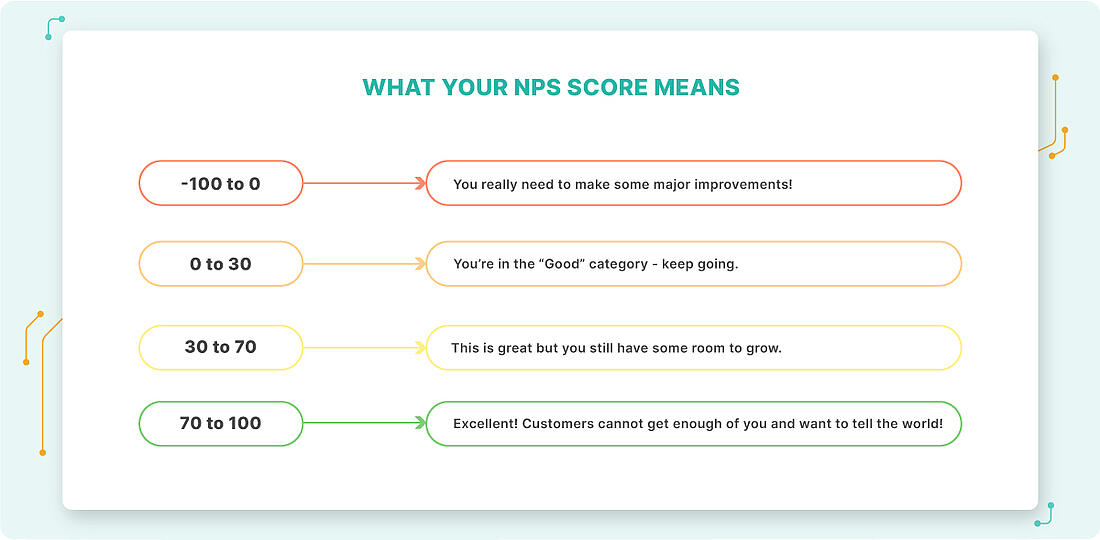
What is a Good NPS score?
Technically, anything above +0 is a good Net Promoter Score (NPS). Of course, nobody really wants that kind of good, do they? Let’s break it down by scores for clarity.
What is a Bad NPS Score?
While we have already discussed that anything above 0 is a ‘good’ Net Promoter Score, when we look at what is ‘bad’, this shifts slightly.
So, you would be right in thinking that anything below +0 is bad, however, the definition of a bad NPS is questionable. It comes down to the average score in your particular industry.
Imagine you have a magic coach hire business and the industry average NPS is 37. If you have a score of between 30 and 40, you have a good score. Not as good as industry leaders, with totals in the 50s, 60s and up, but good.
That means that if you have a score of 25 or lower, you would consider this a bad NPS. In other industries, however, 25 would be considered a good score.
Is Net Promoter Score a 'Vanity Metric'?
The answer to this lies in how you use Net Promoter Score (NPS) for your business.
Based on the fact that you are only generally asking two questions, you will be getting a knee-jerk, emotional reaction from the customer based on the service they have just received.
With this in mind, if your main focus is on increasing the score and not necessarily improving it, you are using it as nothing but a vanity metric - which is fine - if that is all you need!
If you heed the feedback from the customers’ responses and use the information to improve your services, your NPS score will increase naturally - making it a value metric.
How Often Should I Survey the Net Promoter Score (NPS)?
Again, this is dependent on the nature of your business and industry. There is no hard and fast rule.
Some companies prefer to survey their clients annually or quarterly, while some will do it monthly.
If you have a fast-paced contact center dealing with multiple brands and services, for example, you may wish to survey monthly due to the fact that so much can change in a short period of time.
Multiple other factors, such as customer churn rate and repeat business, can also influence how frequently you send your surveys.
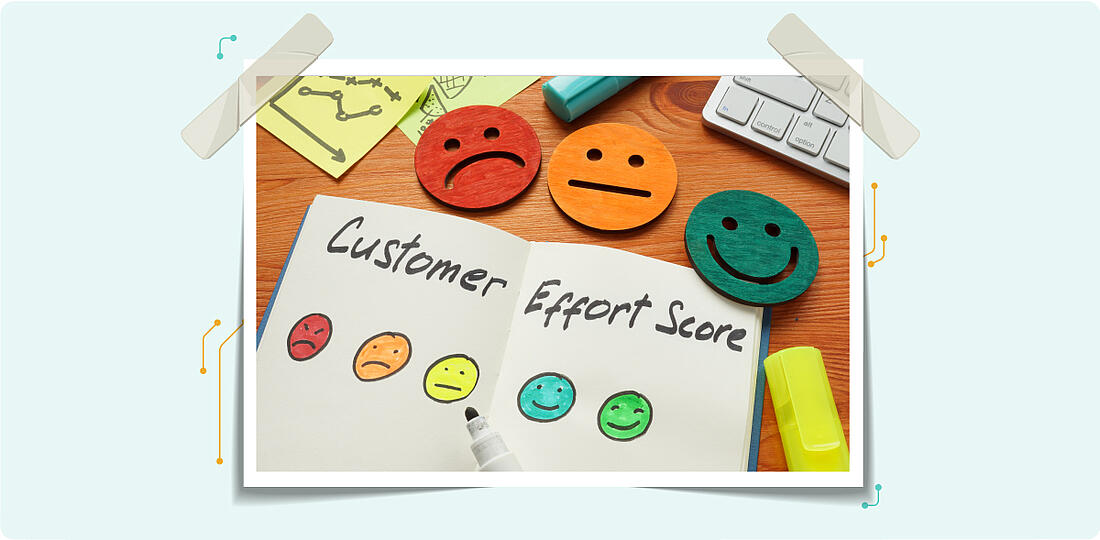
Is There a Better Customer Satisfaction Metric than Net Promoter Score?
There are a number of customer satisfaction metrics out there, and again, which you may find ‘better’ is dependent on your business needs and what you are trying to achieve.
If you want a metric which is simple to understand and interpret - and which looks at the customer’s level of satisfaction with your company - the likelihood is that Net Promoter Score (NPS) is for you.
However, most organizations find that in order to gain a greater understanding of their client base, they will need to use other metrics alongside NPS.
Rather than go through customer satisfaction metrics exhaustively, let’s look at two others which are frequently used - and often together with NPS.
The main thing to note is that all three are alike, in that they gather feedback about how customers feel about your products, services, and company itself. The difference will mainly be in the questions asked.
Customer Effort Score - or CES
A company may wish to ascertain how simple their customers have found a particular process. This could be the ease of the purchasing journey on their website.
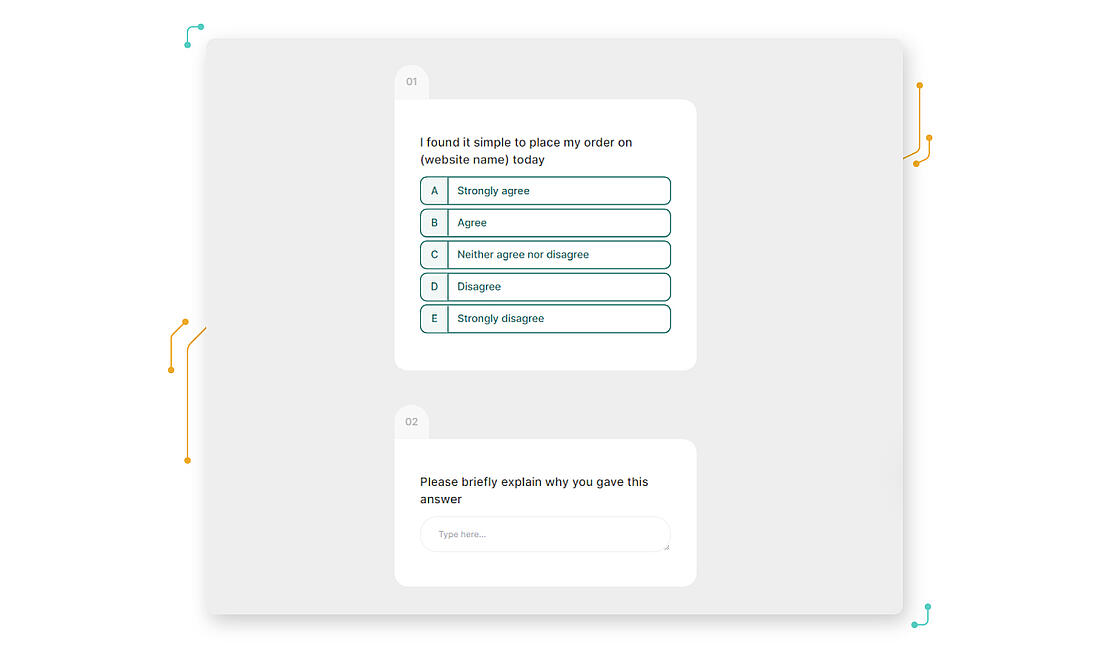
The overall aim of this is to increase customer loyalty and decrease the effort that the customer has to make. This is where the Customer Effort Score survey comes in.
A Customer Effort Score survey will ask the customer a simple question to be answered by the following: a number or letter range, (a, b, c, d etc.). Some will use a numerical 1-5 scale. Others, 1-7. Some will leave the numbers or letters altogether and simply use a range of happy, sad, and neutral faces - usually in corresponding colors. Red for most unhappy, through to green for happiest.
As with Net Promoter Score (NPS), it is highly recommended that a follow up open-ended question is added. For example:

With this information, you can gain insights into how your customers feel about specific interactions with your company, rather than how they feel about it as a whole.
For instance, the customer may be an avid fan of your particular product, and love the customer service, but have real issues placing their order on your site. Therefore, you may not get the full picture and may find it better to use in conjunction with - rather than instead of - NPS.
Customer Satisfaction Survey - or CSAT
The Customer Satisfaction Survey is more the ‘traditional’ type of survey mentioned at the beginning of the article.
This starts with the same, simple one line question format as NPS and CES, but goes on to ask further, multiple choice questions.
This style of survey reads a little like NPS and CES have been squished together and expanded to make the ‘ultimate’ survey.
The format of these surveys, like the other two, may have several variations. The main information a business will expect to take away from this is how satisfied their customers are with different aspects of their products or services.
The key objective is to identify unhappy customers, (and from them, understand things you can fix)!
Also, it is great to see how many customers love you. Again, this survey will give you the reasons for their happiness. After all, we all want to expand on things that make people happy, right?
So, It is not necessarily a case of asking “Is there a better customer satisfaction metric than Net Promoter Score (NPS)?”, rather “Which metrics can I use with Net Promoter Score to get the most valuable information”?.
What Are the Best Online Tools for Measuring Net Promoter Score and Why?
The market is positively swimming with Net Promoter Score (NPS) tools. Every business is likely to want something different, so you may need to kiss a few frogs before you find your Prince Charming!
Ultimately, though, all you need is to understand how NPS works, and have a quality survey tool. You can implement your own NPS any way you like. Just keep it simple and see those scores flood in!
Is the Net Promoter Score as Valid Today as When it Was Introduced?

Do you have customers? Do you want to make them happier? Do you want to know if they could be saying bad (or good) things behind your back? If the answer is a big “YES”, then indeed, Net Promoter Score (NPS) is still relevant!
Net Promoter Score was created in 2003 by Fred Reichheld of Bain & Company. Nineteen years later, not only has it retained its relevance, but grown in popularity, and is used across multiple industries - including many Fortune 500 companies.
Having said this, it is important to bear in mind that since NPS was developed, the world has changed. A LOT!
We customers have become slightly spoiled now, with the availability of next day and same day deliveries, supply chains have got faster and tighter - trying to keep up with our never-ending need to consume.
Essentially, now there are many factors that can make your customer fickle and, therefore, NPS alone may not be as relevant.
For instance, the customer may love everything about your company usually, but have a string of issues with one order (for a really important occasion) and (just at that moment), they hate you!
So, in that one survey, you will only have a reflection of their dissatisfaction now, where they may have been a steadfast promoter previously. With this in mind, it would be better to use other metrics together to get a more accurate view.
NPS is there to give you an easy way to track your customers’ loyalty and satisfaction. It is as relevant as you make it.
As previously mentioned, there are so many different and effective ways to survey your customers and get the information you need. It would be wise to spend some time looking into each and working out what is best for your business.
Sprinkle Some Survey Magic Into Your Marketing!
Thank you for reading to the end! We hope that this has been insightful, and that you now understand Net Promoter Score (NPS).
So, given all we have been through in this article, it is clear that Net Promoter Score (NPS) is a valuable metric which, used alone, enables you to see how customers are feeling about your company, but used in conjunction with other metrics can become a really powerful tool.
As such, it’s a great idea to use a survey tool within a website analytics platform like our very own TWIPLA. This way, you can combine visitor communication features, like surveys, with other features and ensure that the data you bring in is all available in one platform.
Feel free to share this information with others, and - if you liked this, you may be interested in Competition Analysis. This is yet another way to gain insights. Check out our platform here.
In the meantime, we hope that you find the best way for you and your customers to get your Happily Ever After!
Share article
Get Started for Free
Gain World-Class Insights & Offer Innovative Privacy & Security

You might also like
42 Essential KPIs for eCommerce Websites 07 February 2021 - by Simon Coulthard
07 February 2021 - by Simon Coulthard
Market Research: The All-in-One Guide to Conducting Market Research 12 September 2022 - by Simon Coulthard
12 September 2022 - by Simon Coulthard
Top 12 Session Replay Tools to Improve User Experience 16 October 2020 - by Simon Coulthard
16 October 2020 - by Simon Coulthard









